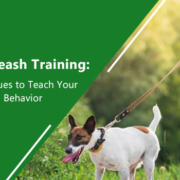Nurturing Your Furry Friend: Selecting the Perfect Dog Walker
It is a well-known fact that pets, particularly dogs, require special care and attention. One of the most vital aspects of their well-being is their daily walk. Not only does it provide essential exercise for your furry friend, but it also offers an opportunity to strengthen your bond with your pet. However, there are times when a busy work schedule or exhaustion from a long day makes it challenging to find time to take your dog for a walk. This is where the services of a dog walker come into play. Dog walkers can alleviate your stress by caring for your pets as if they were their own. But how do you go about finding the perfect dog walker for your beloved companion? In this article, we provide you with the essential guidelines for making this important decision.
Where to Find a Dog Walker
When seeking any service, the first step is to locate potential providers. If you’re unable to personally take your dog for a walk due to time constraints, a dog walker can fulfill this need. Here’s how you can find a reliable dog walker in your area:
Use a Dog-Walking Application:
Consider downloading a dog walker app to streamline your search for local dog walkers. These user-friendly apps not only make it easy to find professional dog walkers but also allow you to track your dog’s location via GPS, providing peace of mind.
Inquire Locally:
Reach out to dog-friendly individuals in your neighborhood, including teenagers or adults looking to earn extra income. They might be willing to help with dog walking. However, for dogs with specific needs or behavior issues, professional dog walking services are a better choice.
Seek Referrals:
Begin your search for a dog walker by asking people you trust, such as friends, family, or your veterinarian. They may have recommendations or know of reputable dog walkers. You can also post your requirement at local animal shelters and parks or ask fellow dog owners during your walks.
Hire a Professional:
While neighborhood kids may be a temporary solution, professional dog walkers offer a more consistent and reliable service. They have experience, a genuine love for dogs, and the ability to arrange for backup walkers when needed.
What Your Dog Needs from a Dog Walker
Choosing the right dog walker is essential to ensure your dog’s well-being. Consider your dog’s size, breed, age, and individual needs when selecting a dog walker. Small puppies may require multiple short walks each day, while larger dogs may benefit from longer, more energetic walks. Other factors to consider include whether your dog prefers leash walks or enjoys walking off-leash and whether they prefer one-on-one attention or group walks with other dogs. Understanding your dog’s preferences is crucial for finding the right dog walker.
Average Pay for a Dog Walker
The cost of a dog walker can vary based on your location, the walker’s experience, and any additional services requested, such as feeding or medication administration. Research the average rates in your city and inquire with friends or neighbors about their dog walker’s fees to ensure you are getting a fair price.
In Conclusion
When you find the right dog walker for your furry friend, you can enjoy peace of mind knowing your pet is in capable hands. Take the necessary steps to select a trustworthy dog walker, as your pet’s well-being should always be a top priority.



